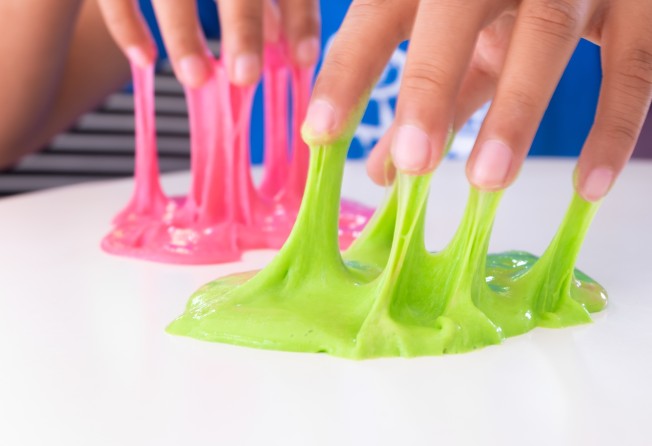
Some slime-based toys pose health risks and can affect fertility in the long term, Hong Kong Consumer Council warns
- Twelve out of 17 products tested found to contain traces of chemical substance exceeding recommended benchmark
- Two types are also found to contain bacteria levels beyond safe limits

Hong Kong parents should think twice about letting their children play with slime-based toys as the products could pose health risks, the Consumer Council warned on Thursday.
After testing 17 slime samples and three putty toys, the city’s consumer watchdog reported that the migration of the chemical substance boron from 12 slime-based toys to a user’s hands had exceeded the recommended upper limit of 300 parts per million (ppm) set in European standards for toy safety, a market benchmark.
Clement Chan Kam-wing, the council’s publicity and community relations committee chairman, warned that children could accidentally ingest boron – a chemical commonly used to make such toys elastic – if they played with slime-based products with a high migration rate of the chemical, and then touch their mouths or food without washing their hands thoroughly.

He said absorbing a medium to high dosage of boron might induce nausea and vomiting in the short term, while long-term intake might result in adverse effects on fertility in adulthood.
One product had a boron migration rate of 3,970 ppm, exceeding by more than 12 times the suggested upper limit level.
Council chief executive Gilly Wong Fung-han urged parents to think carefully about letting their children play with slime-based toys, noting some products also had substances that could induce skin allergies or easily transmit bacteria.
“Parents must ask, or children should also ask: there are many toys, is it really necessary to play with slime-based ones?” Wong said.
Parents must ask, or children should also ask: there are many toys, is it really necessary to play with slime-based ones?
Twelve of the 20 samples tested by the council were also found to contain the preservatives methylisothiazolinone (MIT) or methylchloroisothiazolinone (CMIT), or a mixture of both. Of these, five had such content exceeding the recommended upper limit set by European standards.
The council said these preservatives in high concentrations might cause skin allergies.
The study also found that two slime-based products contained a total aerobic microbial count of 24,000,000 colony-forming units, or CFU, per gram, and 120,000 CFU per gram respectively.
Scientists use CFU as a measurement for microbes.
The council’s report said both levels exceeded the recommended limit of 1,000 CFU per gram under the separate EU Toy Safety Directive.
Wong further advised that children should not let slime-based toys come into contact with open wounds on their skin.